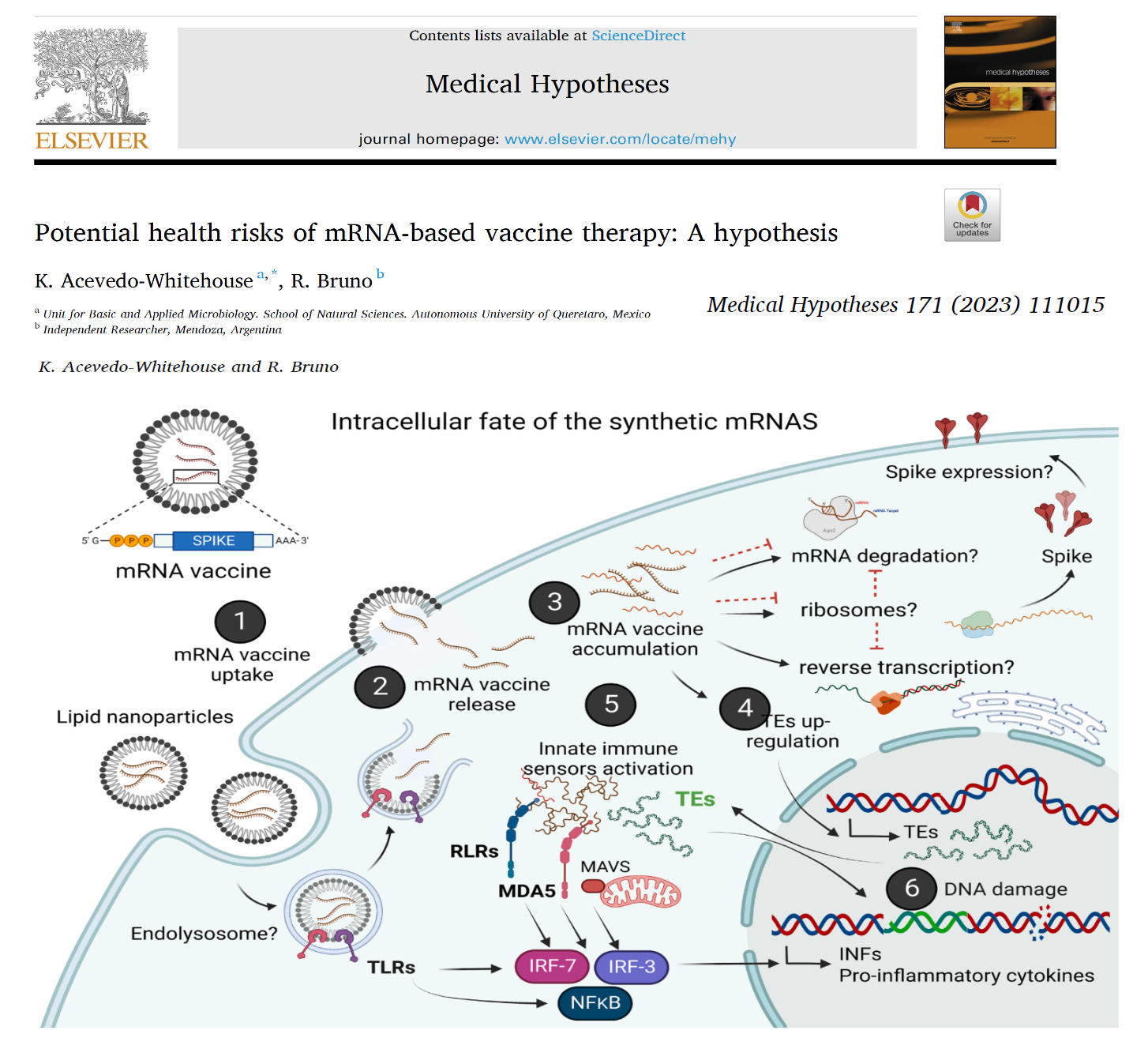Peter A. McCullough | 1 Nov 2023
Despite 30 Years of Development, Thousands of Patents, Basic Questions are Unanswered
My clinical practice is loaded with patients who took one or two vaccines early in 2021 and realized like most of us that the the mRNA products were not safe. A common question is: “doctor when does this shot get out of my body?”
Acevedo-Whitehouse and Bruno raise this point in a recent peer reviewed publication concerning the entire mRNA vaccine product pipeline.
Therapeutic applications of synthetic mRNA were proposed more than 30 years ago, and are currently the basis of one of the vaccine platforms used at a massive scale as part of the public health strategy to get COVID-19 under control. To date, there are no published studies on the biodistribution, cellular uptake, endosomal escape, translation rates, functional half-life and inactivation kinetics of synthetic mRNA, rates and duration of vaccine-induced antigen expression in different cell types. Furthermore, despite the assumption that there is no possibility of genomic integration of therapeutic synthetic mRNA, only one recent study has examined interactions between vaccine mRNA and the genome of transfected cells, and reported that an endogenous retrotransposon, LINE-1 is unsilenced following mRNA entry to the cell, leading to reverse transcription of full length vaccine mRNA sequences, and nuclear entry. This finding should be a major safety concern, given the possibility of synthetic mRNA-driven epigenetic and genomic modifications arising.
We propose that in susceptible individuals, cytosolic clearance of nucleotide modified synthetic (nms-mRNAs) is impeded. Sustained presence of nms-mRNA in the cytoplasm deregulates and activates endogenous transposable elements (TEs), causing some of the mRNA copies to be reverse transcribed. The cytosolic accumulation of the nms-mRNA and the reverse transcribed cDNA molecules activates RNA and DNA sensory pathways. Their concurrent activation initiates a synchronized innate response against non-self nucleic acids, prompting type-I interferon and pro-inflammatory cytokine production which, if unregulated, leads to autoinflammatory and autoimmune conditions, while activated TEs increase the risk of insertional mutagenesis of the reverse transcribed molecules, which can disrupt coding regions, enhance the risk of mutations in tumour suppressor genes, and lead to sustained DNA damage.
Susceptible individuals would then expectedly have an increased risk of DNA damage, chronic autoinflammation, autoimmunity and cancer. In light of the current mass administration of nms-mRNA vaccines, it is essential and urgent to fully understand the intracellular cascades initiated by cellular uptake of synthetic mRNA and the consequences of these molecular events.’
These are stunning revelations. I have called for a halt on mRNA research development until these fundamental questions can be answered. If synthetic mRNA cannot be broken down by the human body, there were be no way to shut off potentially dangerous antigens such as the Spike protein of SARS-CoV-2, Influenza virus hemagglutinin (HA), or any other toxin produced from the genetic code. To make matters worse, it appears that all of these proteins will be expressed on the cell surface and cause auto-immunity with any new mRNA vaccine. This alone is a show stopper for me in my practice. I am advising NO mRNA vaccines for my patients.



